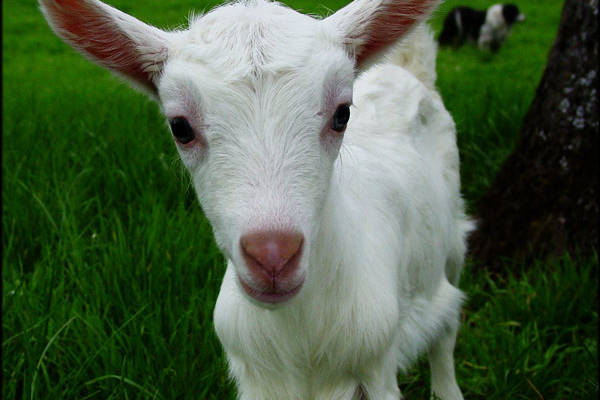By Rabbi Ari Enkin
One of the most fun songs for children at the Passover seder is “Chad Gadya,” meaning “One Little Goat.” But for adults, there are some profound interpretations.
One of the famous songs of the Passover Seder is the playful concluding song of Chad Gadya, meaning “One Little Goat.” In this song there is a series of misfortunes the happen to various objects, one after the other.
To share a few excerpts: “The cat came and ate the goat, which my father bought for two zuzim…then a dog came and bit the cat that ate the goat…then a stick came, and beat the dog, that bit the cat that ate the goat…” There are about a dozen stanzas.
According to one interpretation, the goat symbolizes the Jewish people, the cat represents Assyria, the dog represents Babylon and so on, each item of the song representing a different era in the exile of the Jewish people. But as the song concludes, God will (and has!) returned the Jewish people to the Land of Israel. So according to this approach, Chad Gadya is a song about exile and redemption.
Another interpretation connects the Chad Gadya song to the story of our forefather Abraham. Terach, the father of Abraham, was the neighborhood idol dealer. People would buy idols from Terach for worship.
One day, Terach asked Abraham to watch the store for him while he went on a few errands. Sometime later a customer entered, interested in purchasing an idol. Abraham asked the fellow how old he was.
When the man answered that he was about 60 years old, Abraham asked him why he would want to worship an idol that was only recently manufactured! The customer then realized the stupidity of idol worship and left the store.
In another well-known tale regarding Abraham’s father’s idol business, we are told that on one occasion Abraham took a stick and smashed all the idols in the store except for one, placing the stick in the idol’ hand.
Needless to say, Terach was horrified when he returned and saw his store. He asked Abraham what had happened and who had smashed the idols. Abraham calmly explained that the idol with the stick in its hand got angry and decided to smash all the other idols.
Terach answered that such a thing is not possible since idols don’t move, don’t get angry and all the rest of it. With this response, Abraham tried to get his father to realize that idol worship was ridiculous.
Terach, who was very angry with Abraham for destroying his idols, took Abraham to King Nimrod for some punishment. Nimrod decided to throw Abraham into a fiery furnace (Nimrod worshiped fire) and see whose God would win. Abraham, saved by God, came out of the fire without a scratch. Eventuall,y Terach was won over to monotheism.
According to this approach, the Chad Gadya song represents the monotheism that Abraham so bravely fought for throughout his life. A person can try all kinds of empty religions and ‘isms’ (each represented by another item in the Chad Gadya song), but ultimately, as Chad Gadya concludes, “…then came the Holy One Blessed Be He” – anyone with intelligence will realize that there is nothing besides Him!
There are other interpretations as well! What’s yours?


